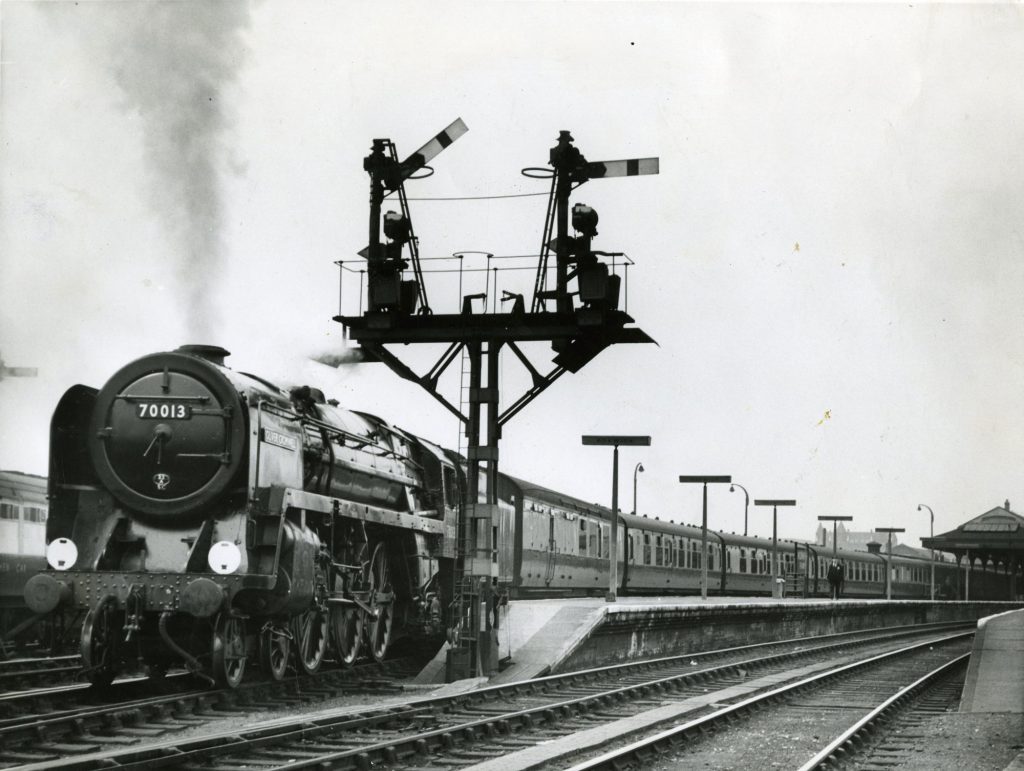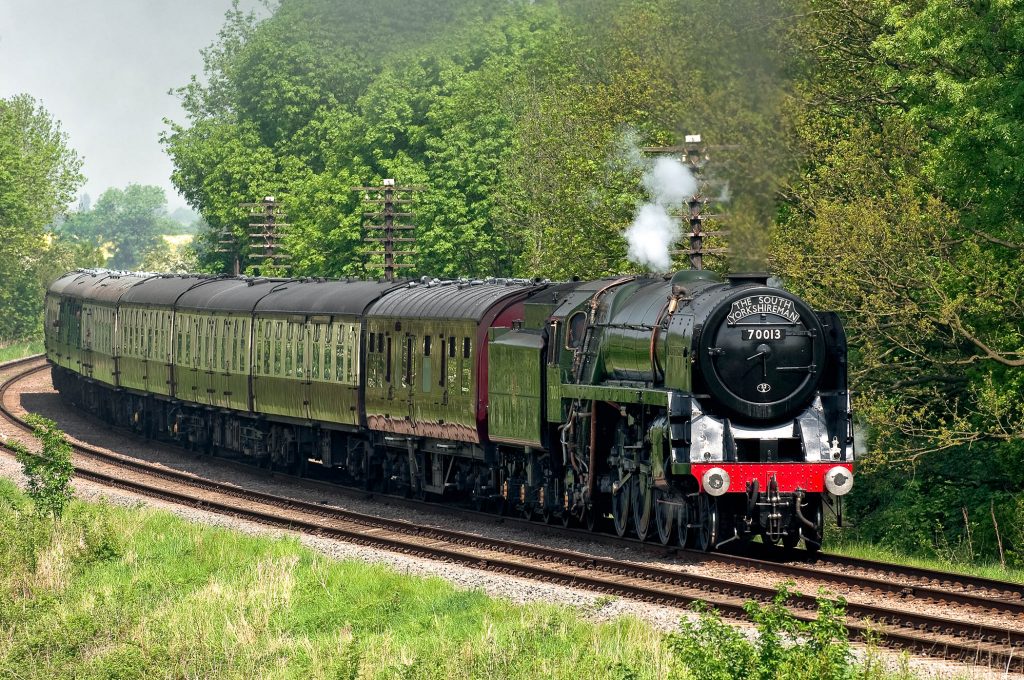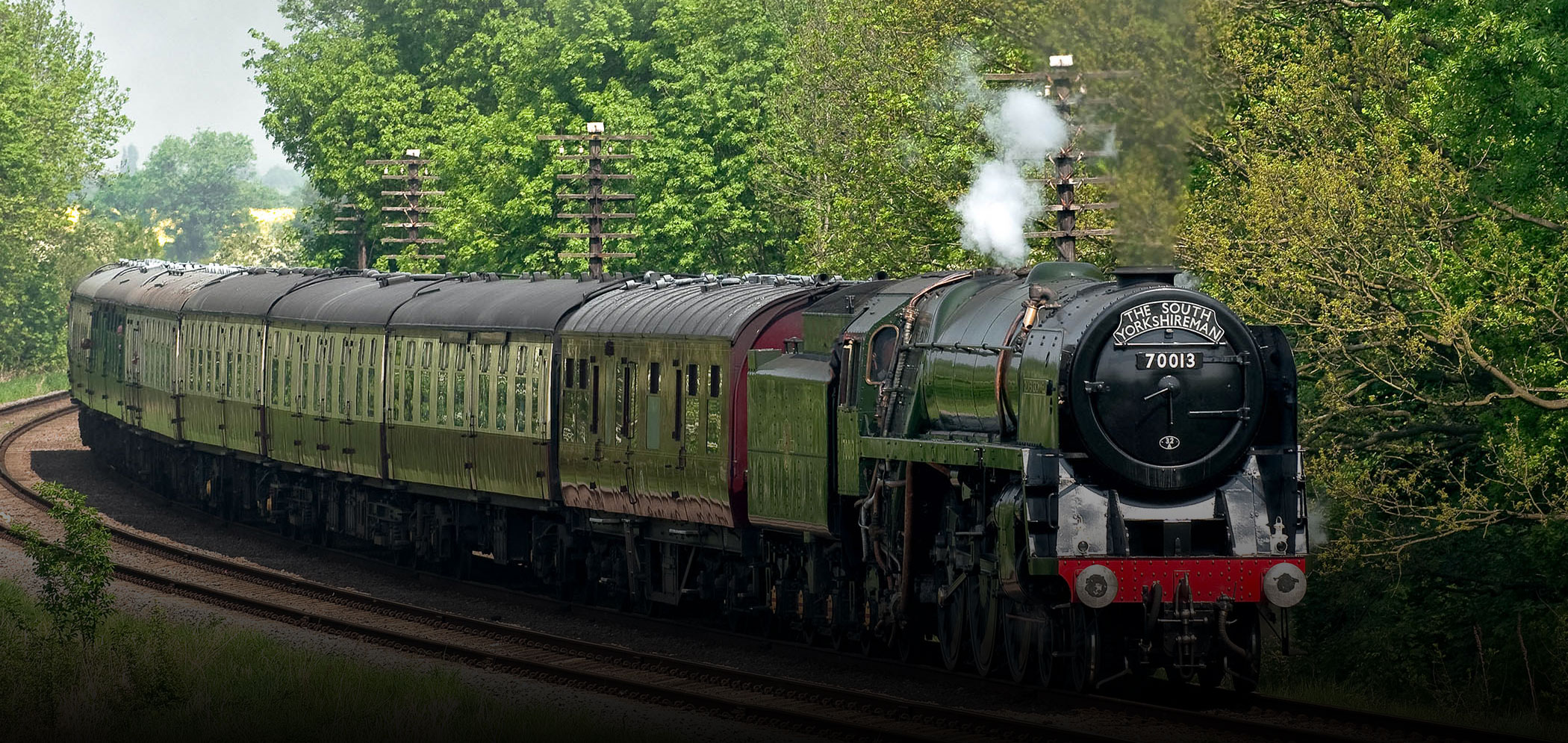Progressive dieselisation and electrification of the main routes out of London and elsewhere had seen Britain’s last steam-hauled express passenger service run between Weymouth and Waterloo on 9 July 1967. By the beginning of 1968, steam haulage was retreating into the hills of the North West, relegated to freight duties, secondary passenger services and assisting errant diesel and electric locomotives. The last scheduled passenger service ran between Preston and Liverpool on 3 August that year, and 12 August saw a general ‘ban’ on steam.

Curtains for steam on the railways?
However, on 11 August British Rail’s curtain call for steam on the standard gauge network was marked by special train No. 1T57, ticket price £15 15s 0d (fifteen guineas). Despite being ostensibly run for enthusiasts, the price was high—it equated to approximately 71 percent of a manual worker’s average weekly pay of £22 5s 3d, as quoted in Parliament on 25 November 1968. Despite this, 450 passengers paid the fare.

The special featured four locomotives: three Class 5MT 4-6-0s (Nos. 45110, 44781 and 44871), and British Rail’s last operational ‘pacific’, Britannia Class 7MT 4-6-2 No. 70013 Oliver Cromwell. Although class prototype No. 70000 Britannia was in storage, Oliver Cromwell was selected for what is now the National Railway Museum’s collection on grounds that it was in better overall condition, having been the last standard-gauge steam locomotive to receive a routine heavy overhaul by British Rail in 1966-7.
The itinerary commenced at Liverpool Lime Street with 45110 running to Manchester Victoria. Oliver Cromwell took over for the journey to Carlisle, from where 44781 and 44871 double-headed the train back to Manchester Victoria. The final leg was hauled by 45110 to Liverpool, where the end had truly arrived… or had it?

Preserving the past
On the face of it, 1T57 was supposed to commemorate the end of a 164-year story that began with Richard Trevithick’s steam locomotive trials on the Merthyr Tramroad in South Wales in 1804. Indeed, it was the end of steam as most people knew it. However, another future icon of the National Railway Museum, Class A3 No. 4472 Flying Scotsman, was still permitted to run on British Rail’s metals after the 1968 steam ban—the result of an agreement secured with British Rail in 1963 by its then-owner, Alan Pegler.
The embryonic preservation movement had purchased several locomotives directly from British Rail and ran them on routes such as the Keighley & Worth Valley Railway, which opened to the public in June 1968. Steam was still operating on industrial railway systems around the country, as testified by the National Coal Board and even London Transport. Indeed, British Rail itself still ran narrow-gauge steam services on the Vale of Rheidol Railway.
The ban itself lasted only three years, being broken by another locomotive from the National Railway Museum’s collection, 60xx King Class 4-6-0 No. 6000 King George V, in a series of runs which included a return to Paddington in 1971, presaging the emergence of the current steam-hauled charter market. Since privatisation, ‘open access’ has been granted to smaller train operating companies—in a serendipitous twist, this has ensured the steam locomotive’s ‘right to roam’ around different parts of the modern railway network, albeit within the constraints of scheduled services.
One chapter closes, another begins

50 years on, the events of 11 August 1968 are being commemorated on the Great Central Railway, with Oliver Cromwell the focus. The poignancy of this is not lost on enthusiasts and well-wishers—1T57 marked a paradigm shift in railway operations. It was the point at which one form of technology with everyday application gave way to its successors, as an image-conscious railway operator sought to compete with burgeoning personal transport.
However, as one chapter ended, another began; the determined efforts of generations of railway preservationists and engineers have ensured that the sights and sounds of steam are not lost. Happily, three of the four locomotives that took part in the 1968 run are still with us, and all have enjoyed spells on the national network. Under the auspices of the 5305 Locomotive Association, Oliver Cromwell has enjoyed a second career as a popular main-line performer and roving ambassador for the National Railway Museum and the Science Museum Group.
We broadcast live from the Great Central Railway commemorations on our Facebook page on Saturday 11 August 2018—you can watch the full video below.
Find out more about Oliver Cromwell and Flying Scotsman via our online collection.

cannot wait.
Wow – hard to believe 50 years has gone “walkabout” Well done to all concerned, the NRM, BBC, GCR etc. Hope you are around when the GCR(L) and GCR(N) are bridged and then you can experience ‘intercity travel’ from Nottingham to Leicester which woud be another “world-first”. Happydaze & greetings from ‘down-under’ Jon Walton & friends on Bribie Island (just north of Brisbane, Australia) 14:16 local time)
How much might a (signed) original ticket from 1T57 be worth now in 2022? Any ideas?